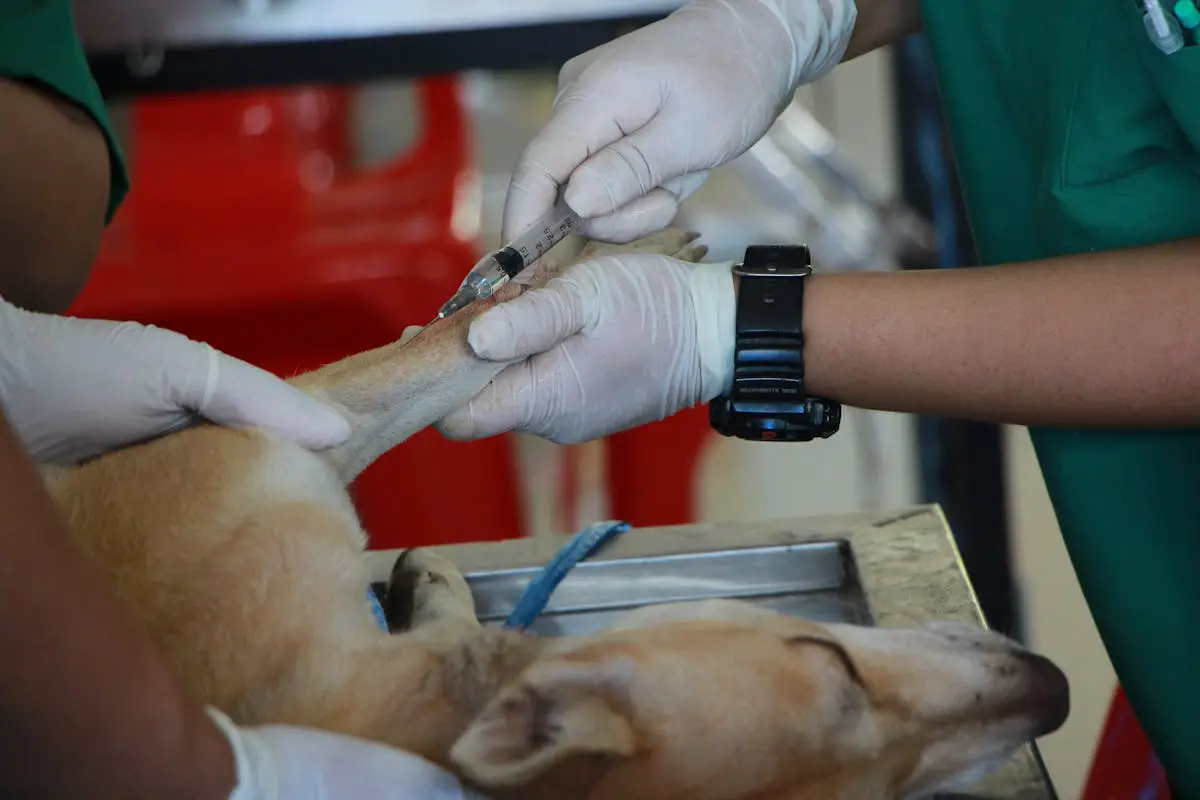If you believe poison was ingested by your pet, it is important to take quick action!
Contact your veterinarian or an emergency veterinary clinic:
They can provide guidance on the best course of action. If your vet is not available you may wish to connect with one of the telemedecine veterinarian contacts.
Consider contacting a poison control center:
Contact the Pet Poison Helpline, a 24/7 animal poison control center, (1-855-764-7661) to have the risk of poisoning assessed for an $89 fee (as of July 2025).
Or contact the ASPCA Animal Poison Control Center (1-888-426-4435) to ask for immediate advice.
Be prepared to provide information about the poison ingested by your pet:
When you call, be ready to tell them what your pet ingested, how much they ingested, when they ingested it, and what symptoms they are experiencing.
Do not attempt to induce vomiting (unless specifically directed by a professional)
Some substances can cause more harm if vomited.
How to Recognize signs of Poisoning
What signs might warn you that your pet may have been poisoned? The symptoms vary depending on the poison. Toxins may produce the following signs:
- Gastrointestinal signs such as drooling, lack of appetite, gagging, vomiting, and diarrhea
- Neurological signs including hiding, hyperexcitability, incoordination, tremors, seizures, lethargy, or coma
- Respiratory signs such as coughing, sneezing, panting, or difficulty breathing
- Skin signs including redness, inflammation, burns, and swelling
- Liver injury that causes signs such as stomach upset, dehydration, jaundice, and weight loss
- Kidney injury that causes signs including stomach upset, halitosis (bad breath), changes in thirst and urination, lethargy, and weight loss
- Anemia, which may include signs such as yellow or pale gums, lethargy, weakness, heavy breathing, and hiding
Some toxins act on more than one body system and can produce any combination of the above signs. It is important to remember that, while most cases of intoxication cause acute (sudden) problems, chronic, delayed intoxication can also occur.
Poisonous Plants
Toxic and Non-Toxic Plants List (thanks to ASPCA)
This list contains plants that have been reported as having systemic effects on animals and/or intense effects on the gastrointestinal tract. Please note that the information contained in the plants list is not meant to be all-inclusive, but rather a compilation of the most frequently encountered plants. Individual plants may differ in appearance from the photos used on our listings. Please be sure to check the name of the plant to determine its toxicity.
Also, be advised that the consumption of any plant material may cause vomiting and gastrointestinal upset for dogs and cats. Plants listed as either non-toxic, or potentially toxic with mild GI upset as their symptoms are not expected to be life-threatening to your pets.
Printable Lists of Toxic and Non-Toxic Plants:
Cats – Toxic and Non Toxic plants
Dogs – Toxic and Non Toxic plants
Horses – Toxic and Non Toxic plants
Household Hazards
Poison ingested by pets in your household can also include:
- Medications: Human medications, both prescription and over-the-counter.
- Cleaning Products: Many household cleaners, including bleach, disinfectants, and detergents, contain chemicals that can be harmful if ingested or if they come into contact with skin or paws.
- Pesticides and Rodenticides: These can be lethal to pets, even in small amounts.
- Antifreeze: Antifreeze contains ethylene glycol, which is highly toxic even in small quantities.
- Paints and Solvents: These can be harmful if ingested or inhaled.
Toxic Hazards for Cats – this post from VCA animal hospitals includes what to do if your cat has a chemical on its coat.
- You can bathe the cat or rinse the fur at home to prevent absorption through the skin or ingestion from grooming. Remove your cat’s collar, if present, as it may also have been contaminated. To remove chemicals from a cat’s haircoat, it is best to bathe them with a liquid dish soap (used to wash dishes in the sink) and to use lukewarm water. Do not cut substances out of your cat’s fur using scissors, as this often results in accidentally cutting the skin. Avoid using solvents or other cleaning products to strip the fur, as they can also be toxic to cats. If you cannot bathe your cat without getting injured, bring your cat to the veterinarian where they can provide mild sedation to allow for proper handling.
Food Hazards for Dogs
- Some common foods that are toxic to dogs include chocolate, grapes and raisins, onions, garlic, macadamia nuts, and xylitol (an artificial sweetener found in many products).
Food Hazards for Cats
- Some common foods that are toxic to cats include alcohol, chocolate, coffee or caffeine products including tea, grapes, raisins, currants, onions, garlic, leeks, chives, tomatoes, raw eggs fish meat or dough, and xylitol.
Read More
Creating a Pet-Friendly Yard – tips on making their every day surroundings safe.
Canada’s Guide to Dogs – learn about dealing with emergencies and life threatening health concerns for dogs, including poisoning.
First Aid for Pets – essential part of pet care is knowing some basic first aid, especially recognizing the signs and symptoms of a potentially serious injury or illness
-

Linda has dedicated years to nature and animal welfare volunteerism. Her goal is to offer pet owners information and practical advice about resources available, realistic prevention, and a common sense spectrum of care that can help people keep their pets healthy and at home.





